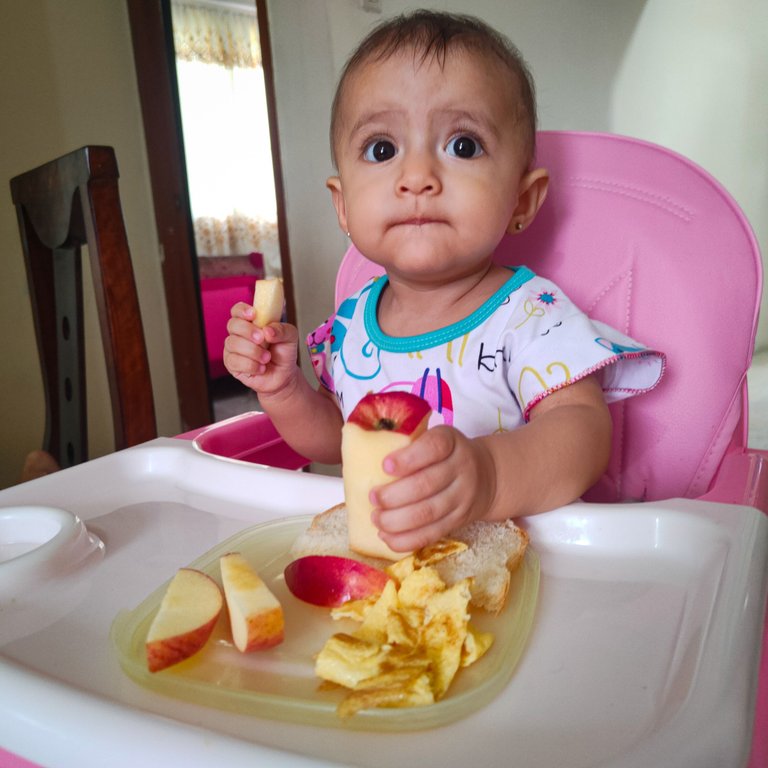
Bienvenidos || Welcome

La alimentación complementaria para algunos padre ha sido un tema sencillo de abordar para otros un océanos de dudas y es que en este camino llamado Maternidad y Paternidad... el conocimiento nunca es suficiente y aún así puede ser complicado puesto que cada niño es un universo y cada etapa se vive de una forma única y distinta, en mi caso soy madre de 2 hermosas niñas y la experiencia en cuanto la alimentación complementaria es totalmente distinta y es que actualmente nos encontramos con 2 métodos o forma de alimentar a nuestros bebés las cuales son bastante opuestas y ambas con sustentos científicos que las certifican como seguras para nuestro niños ¿pero cuál es la mejor? Te cuento mi experiencia.
Complementary feeding for some parents has been a simple topic to address for others an ocean of doubts and in this path called Maternity and Paternity.... knowledge is never enough and even so it can be complicated because each child is a universe and each stage is lived in a unique and different way, in my case I am a mother of 2 beautiful girls and the experience in terms of complementary feeding is totally different and we currently have 2 methods or ways to feed our babies which are quite opposite and both with scientific evidence that certify them as safe for our children, but which one is the best? I tell you my experience.

Cremas o purés de verduras || Vegetable creams and purees
Este método de nuestras abuelitas... proviene de décadas atrás y de prácticas que pasó de generación en generación, creo que todos o la mayoría recordamos a nuestras abuelas, tías y madre dándonos de comer sus famosas cremas de verduras ✨🥰 diciéndonos que la comamos toda para crecer sanos y fuertes, incluso cuando yo llegue a cuidar a mi sobrinita que hoy por hoy tiene 8 añitos recuerdo que mi mamá le preparaba crema de diversas verduras y yo la alimentaba con ella, y la verdad no hay nada malo con ellos, a excepción de que los niños solo tienen una experiencia exclusivamente gustativa, ya que su cuidador es quien alimenta de forma directa siempre.
This method of our grandmothers? I think we all or most of us remember our grandmothers, aunts and mother feeding us their famous vegetable creams ✨🥰 telling us to eat it all to grow healthy and strong, even when I got to take care of my little niece, who is now 8 years old, I remember that my mom used to prepare her cream of different vegetables and I would feed her with it, and the truth is that there is nothing wrong with them, except that children only have an exclusively gustatory experience, since their caregiver is the one who always feeds them directly.
El método BLW ||The BLW method
Este método aunque en la actualidad pareciera ser novedoso y nuevo ya tiene varios años de estudios y es que este consiste en alimentar a los bebes con alimentos sólidos, cocinados, con una textura suave, permitiéndole vivir experiencia no solo gustativa sino también sensorial pues cada alimento tiene su propia textura, sabor y olor,este método permite que los niños vivan una experiencia diferente ya que utilizan sus manos para llevar a su boca los diversos alimentos y aunque su cuidador supervisa de forma directa permite que el pequeño sea más independiente.
This method, although it seems to be new and novel, has been studied for several years and consists of feeding babies with solid food, cooked, with a soft texture, allowing them to experience not only taste but also sensory experience because each food has its own texture, taste and smell, this method allows children to live a different experience as they use their hands to bring to their mouths the various foods and although their caregiver supervises directly allows the child to be more independent.
¿Pero cual es el mejor? Y ¿cuál me ha funcionado a mi?|| But which one is the best? And which one has worked for me?
La verdad es que ambos métodos funcionan y tienen su ventajas y desventajas y queda a criterio de cada familia escoger el que mejor se adapte a ellos y sus bebés este punto es vital dejarlo claro, ya que la idea del post no es mal poner o cuestionar alguno de los 2 métodos, ahora ¿cual aplicó yo? Pues utilizo ambos métodos el porque es el siguiente: las cremas nos permite controlar un poco más la alimentación nuestros bebés y que estemos seguros de que están siendo nutridos no solo con la lactancia sino también con las cremas de verduras, pero también utilizo el método BLW ya que le permite a mi hija experimentar las diversas texturas de los alimentos así mismo trabaja las pinzas con sus dedos, el agarre, implementar este método nos permite que nuestros niños comiencen aceptar la comida sólida poco a poco, incluso puede que al comienzo ponernos un tanto nerviosos porque con lo primero que nos topamos es con las famosas arcadas de nuestros bebés que pareciera que están atragantándose o a punto de vomitar, pero esto es totalmente normal ya que los bebés los único que conocen antes de la alimentación complementaria es la lactancia materna, leche de fórmula o cremas, sin embargo es importante siempre supervisar a nuestros pequeños cuando utilizamos este método y asegurarnos que los alimentos sean lo suficientemente suave para que su boca tenga la capacidad de masticar fácilmente, aún cuando tengan o no dientes, ya que hay bebés que a los 4 meses ya brotan sus primeros dientes y otros bebés lo hacen a los 8 meses, aveces como padres nos puede frustrar este método la ver que los bebés no se comen la totalidad de los alimentos que le preparamos y presentamos en el plato, pero recordemos que este método es más exploratorio para nuestros bebés.
The truth is that both methods work and have their advantages and disadvantages and it is up to each family to choose the one that best suits them and their babies, this point is vital to make it clear, since the idea of the post is not to bad put or question any of the 2 methods, now which one do I use? Well, I use both methods, the reason is the following: the creams allow us to control a little more the feeding our babies and that we are sure that they are being nourished not only with breastfeeding but also with vegetable creams, but I also use the BLW method because it allows my daughter to experience the different textures of food as well as work the tongs with her fingers, implementing this method allows our children to begin to accept solid food little by little, even at the beginning it can make us a little nervous because the first thing we come across is the famous gagging of our babies that looks like they are choking or about to vomit, but this is totally normal since the only thing babies know before complementary feeding is breastfeeding, formula milk or creams, however it is important to always supervise our little ones when we use this method and make sure that the food is soft enough so that their mouth has the ability to chew easily, even if they have teeth or not, since there are babies that at 4 months already sprout their first teeth and other babies do it at 8 months, sometimes as parents we can be frustrated with this method to see that babies do not eat all the food we prepare and present on the plate, but remember that this method is more exploratory for our babies.
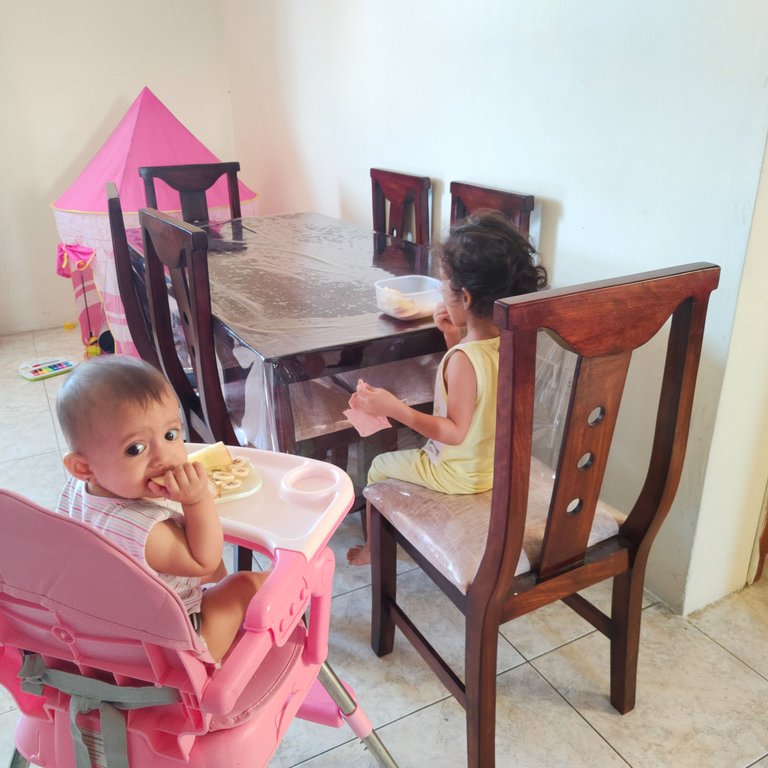
En mi caso me gusta ofrecer frutas, verduras, cereales, proteínas con el método BLW en el desayuno y almuerzo y cremas en la merienda y cena, es importante recordar que esto es complementario pues la lactancia materna debe seguir siendo a libre demanda de nuestros pequeños hasta la edad que la madre y el niño consideren nadie tiene porqué sugerir a que edad se debe dejar de lactar a nuestros pequeños.
In my case I like to offer fruits, vegetables, cereals, proteins with the BLW method at breakfast and lunch and creams at snack and dinner, it is important to remember that this is complementary because breastfeeding should continue to be at the free demand of our little ones until the age that the mother and child consider, no one has to suggest at what age to stop breastfeeding our little ones.
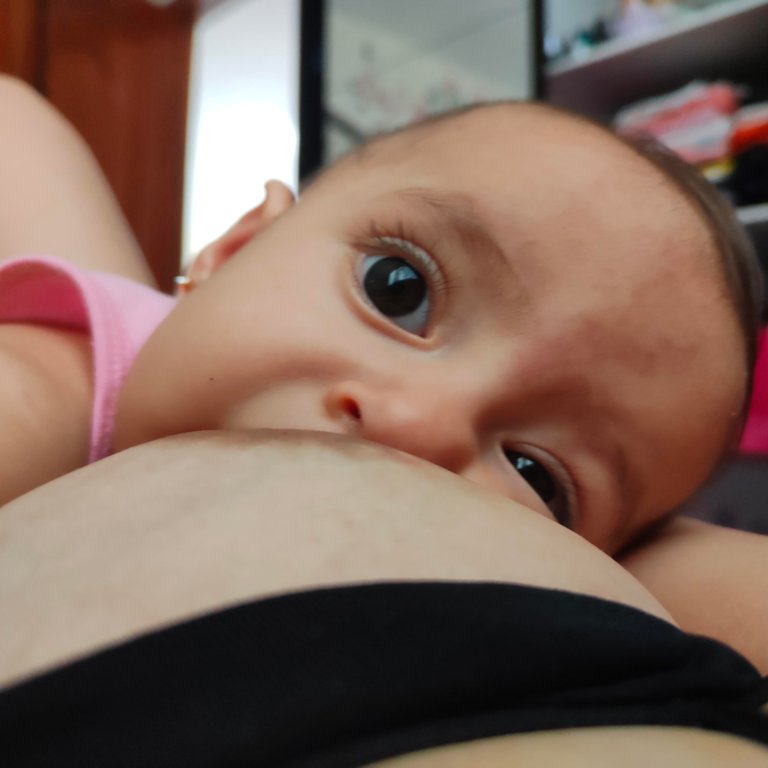
Otro punto importante dejar claro es que la alimentación complementaria debe iniciar a los 6 meses nos antes y esto se debe a que el tracto digestivo de nuestro bebé antes de los 6 meses aun es bastante inmaduro lo que dificulta que procesen los alimentos y absorban
correctamente los nutrientes proveniente de alimentos que no sean leche ya sea materna o fórmula, sin duda comenzar la alimentación complementaria antes de lo recomendado es riesgosos para nuestros bebés y su salud incluso vidas, así que lo recomendable es siempre consultar a su pediatra para un correcto seguimiento del crecimiento y desarrollo en cada una de sus etapas.
Another important point to make clear is that complementary feeding should start at 6 months or earlier and this is because the digestive tract of our baby before 6 months is still quite immature which makes it difficult to process food and absorb nutrients properly from foods other than breast milk or formula, certainly start complementary feeding before recommended is risky for our babies and their health and even lives, so it is always advisable to consult with your doctor before starting complementary feeding. without a doubt, starting complementary feeding earlier than recommended is risky for our babies and their health and even their lives, so it is always advisable to consult your pediatrician for proper monitoring of growth and development in each of its stages.
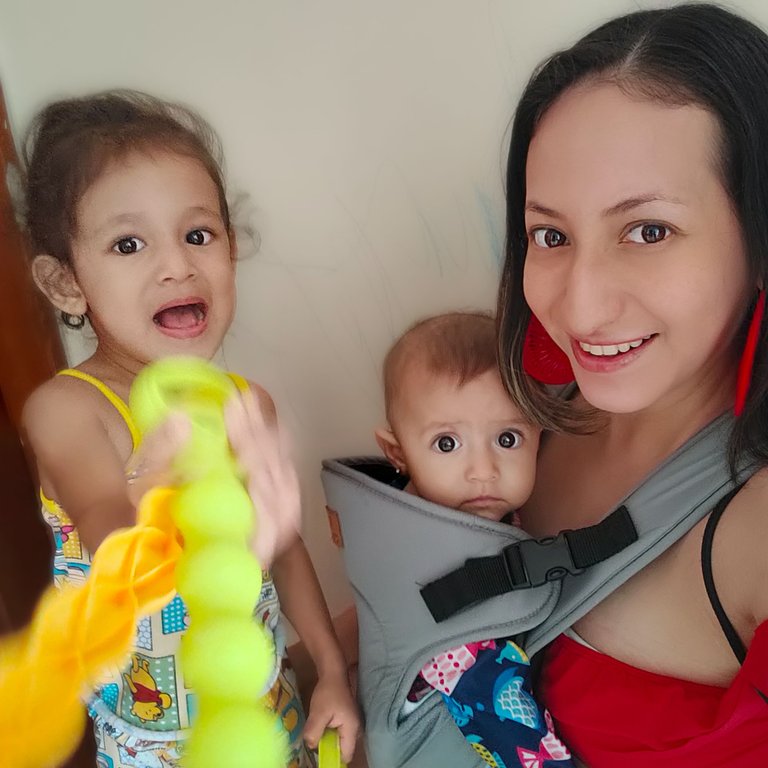
Está ha sido mi experiencia mamita y papitos espero le sea de utilidad la información aquí brindada en est oportunidad, como siempre agradezco a cada uno por llegar hasta aquí, por su tiempo, atención y apoyo será hasta una próxima estimados amigos.
This has been my experience mommy and daddies, I hope you find the information provided here useful in this opportunity, as always I thank each one of you for coming here, for your time, attention and support, until next time dear friends.

Hasta la próxima...
See you next time... 🩷
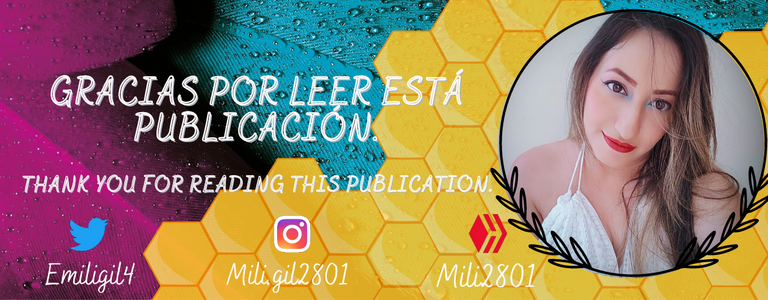

🎥Imágenes y vídeo creados con: |Images and video created with: CapCut | Giphy| Canva
🇪🇸Traducido con DeepL





